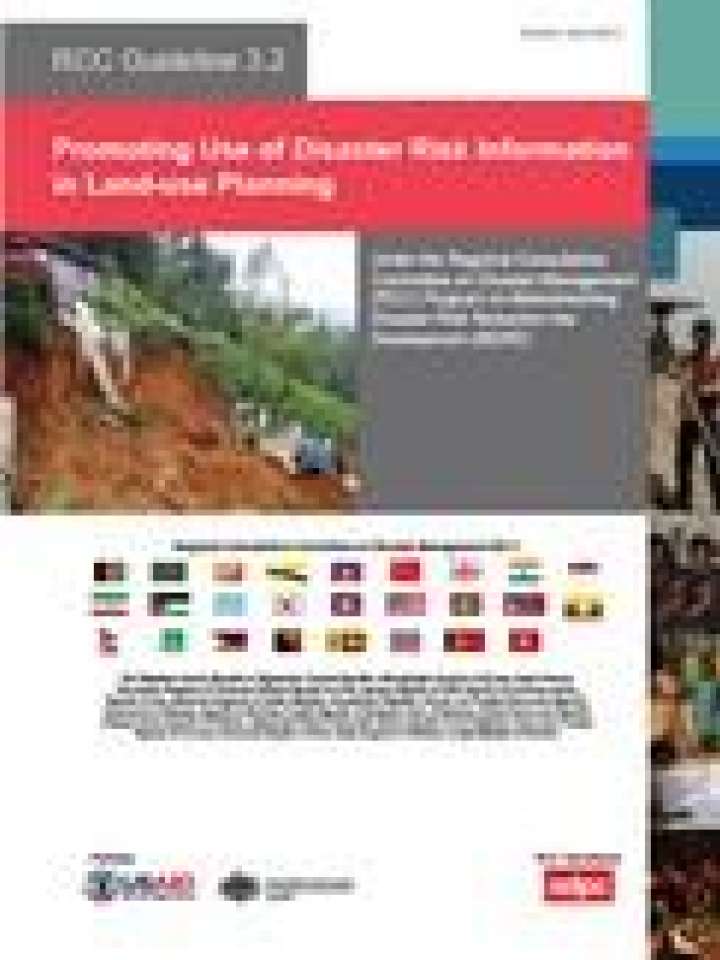RCC Guideline 3.2: promoting use of disaster risk information in land-use planning
This guideline aims to: (i) improve understanding of the role of land use planning in disaster risk reduction; (ii) highlight importance of incorporating disaster risk information in land use planning; (iii) provide guidance on how to incorporate disaster risk information in land use planning; (iv) identify enabling factors for incorporating disaster risk information in land use planning; (v) present examples from RCC member countries where initiatives have been undertaken to incorporate disaster risk in land use planning at different scale; and (vi) provide a base for interested RCC member countries to develop similar guidelines in their country context and use it for facilitating dialogue with external development partners on the need to incorporate disaster risk information in land use planning.
The case studies from RCC member countries comprise:
- Hazard Characterization: the Case of Dhaka City, Bangladesh
- Rajshahi City, Bangladesh, Incorporating disaster risk information at local level land use plan
- Ratnapura, Sri Lanka: Hazard vulnerability and zonation mapping
- Thailand, Incorporating hazard risk information in land use plans by taking advantage of post disaster reconstruction
- India: Proposed Amendment in Town and Country Planning Legislations, Regulations for Land Use Zoning, Additional Provisions in Development Control Regulations for Safety & Additional Provisions in Building Regulations / Byelaws for Structural Safety - in Natural Hazard Zones of India
- The Philippines; Guidelines for mainstreaming disaster risk reduction into sub national development; land use/physical planning in the Philippines
- Viet Nam, Principles and Practice of Ecologically Sensitive Urban Planning and Design: An Application to the City of Hai Phong
- Piloting of Disaster risk reduction-Enhanced Comprehensive Land Use Plan in Surigao City, Philippines
Explore further

